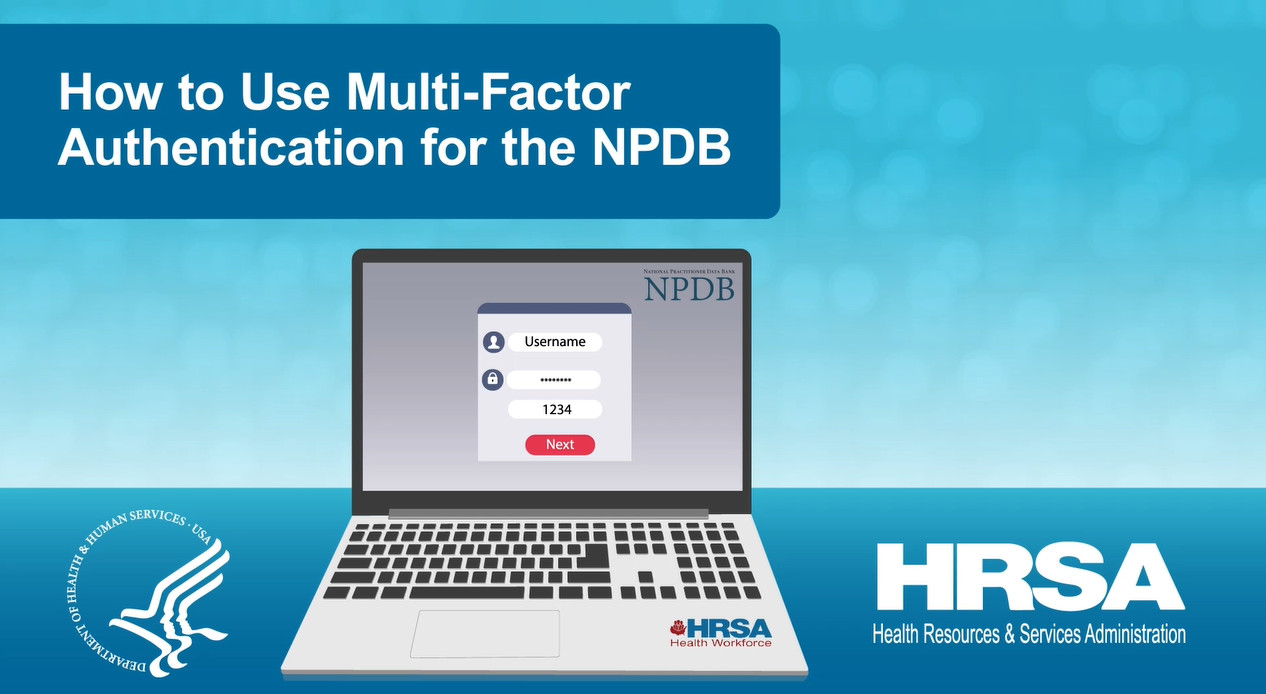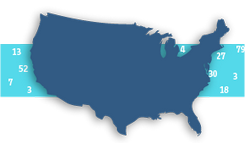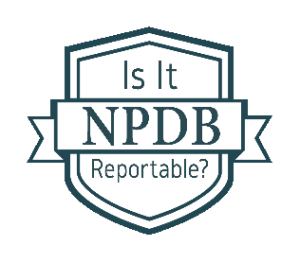NPDB Insights - March 2024
Did You Miss Our Querying Webinar?
You can view the NPDB querying webinar recording from January 25, 2024. This one-hour webinar provides practical information, including how to:
- submit the necessary information to ensure a timely and accurate response
- decide between a One-Time Query or Continuous Query
- enroll and cancel enrollments in Continuous Query
- avoid rejection of a query, and
- interpret a query response
Did you miss any of our past webinars? Check out our Events page for past event recordings and materials.
Multi-Factor Authentication to Become Mandatory on April 25th

How to Use Multi-Factor Authentication for the NPDB
Watch the Video (3:10)The NPDB began implementation of MFA in the summer of 2023. During the evening of April 25, 2024, Eastern Time, MFA will become mandatory for all users. After the April 25 switchover, you will not be able to query or report to the NPDB until MFA is enabled.
MFA is an authentication method that requires users to provide two or more verification factors to gain access to the NPDB. MFA requires something you know, like a password, and something you have, often a mobile phone, for authentication.
MFA helps ensure that the NPDB stays secure, that the data it contains is kept confidential, and that unauthorized users cannot gain access. MFA is a more secure sign in method, therefore frequent password changes are unnecessary. You will also no longer need to use your DBID in order to access the NPDB.
Have questions? Want to learn how to get started with MFA? Check out our Multi-Factor Authentication Help page.
New and Updated 2023 Data and Resources

In 2023, the NPDB created and updated resources to help our users.
- The NPDB introduced our new sign in method, multi-factor authentication, or MFA, and created a training video, help page, and FAQs to help users make the transition to MFA.
- We held two webinars, State Licensure Reporting Requirements and Data Bank Administrator Training, to help users gain a deeper understanding of the NPDB.
- In 2023, we provided more than 12.5 million query responses and received more than 65,000 new reports. The NPDB now contains more than 1.8 million reports. We updated our "What is the NPDB?" infographic with the latest 2023 data.
- The Public Use Data File and Data Analysis Tool now include data for all of 2023. We update the PUF and DAT quarterly. Sign up on the PUF and DAT pages to be notified when updates are posted to those portions of the website.
Visit our NPDB timeline to view milestones from the last year.

Is It Reportable?
A physician applied for medical staff appointment at a hospital but then withdrew the application before a final decision was made by the hospital's governing body. The physician was not being specifically investigated by the hospital. Should the hospital report the withdrawal to the NPDB?
No. Absent a particular investigation, the voluntary withdrawal of an application for medical staff appointment or clinical privileges should not be reported to the NPDB.
The latest updates and resources are available at https://www.npdb.hrsa.gov.
Previous editions of NPDB Insights are available in our archive.
 An official website of the United States government.
An official website of the United States government.

